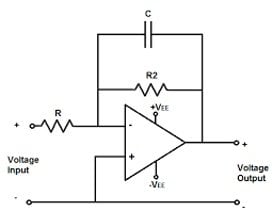Signal Chain Basics
In the second of our four-part series on analog engineering skills, we explain the function of the analog signal chain and review key component specifications.

Figure 1 Block diagram of the analog signal chain
Many of the electronic devices we use every day, and on which we’ve come to rely, simply would not function without the use of real-world input signals designed by electronics engineers.
What is the analog signal chain?
The analog signal chain (Figure 1) consists of four main elements: sensors, amplifiers, filters, and data converters (ADC). These are used to detect, condition, and convert analog signals into a digital format suitable for processing by a microcontroller or other digital control system.
Sensors
The first part of the analog signal chain is the sensor (often called a transducer) which detects the input signal and converts it into electrical energy, usually in the form of an analog voltage or current. Sensors operate on a variety of physical principles. Some examples include:
- Temperature - Thermocouples and resistance temperature detectors (RTD)
- Pressure - Strain gauges or capacitive membranes
- Heart Rate - ECG electrodes
- Light - Photoresistors
- Sound - Microphones
For sensors with a voltage output, the range is typically from a few micro-volts (uV) to several milli-volts (mV), making the signal very susceptible to interference from sources of unwanted electrical noise. The noise can come from many directions but is broadly categorised as electromagnetic interference (EMI) or radio-frequency interference (RFI). To overcome this, the sensor output is usually measured as the difference between two terminals (differential) so that noise signals common to both are rejected.
Amplifiers
The second component in the signal chain is the (differential) amplifier, an electronic circuit that increases the magnitude of the sensor output by a scaling factor, A, according to the following formula, where A is called the gain.
The amplifier is needed because the sensor signal is typically too small to be converted into a digital format by the Analog-to-Digital Converter (ADC) at the end of the chain. The amplifier boosts the signal amplitude to a level that the ADC can effectively read. The maximum output voltage that an amplifier can produce is very close to the voltage level of its power supply.
Another engineering consideration that impacts design and component selection is the signal-to-noise ratio (SNR). Measured in decibels SNR is the ratio of signal strength compared to unwanted noise. A high SNR dB rating demonstrates a powerful signal which is more resilient against the effects of noise.
In many applications, a programmable gain amplifier (PGA) is used in conjunction with an automatic gain control circuit (AGC), dynamically increasing or decreasing the amplifier’s gain if the magnitude of the sensor signal goes outside of its expected range (due to environmental or other reasons). If the sensor signal does go too high the amplifier could saturate - causing it to attempt to produce an output signal higher than is physically possible.
Filters
Once amplified, the sensor signal must then pass through an analog filter circuit to remove any unwanted frequency components. The three main categories of analog filter circuits are:
- Low-pass filter (removes high-frequency signals)
- High-pass filter (removes low-frequency signals)
- Band-pass filter (only allows signals within a defined range to pass through)
Filter circuits are constructed using a combination of capacitors, resistors, and an operational amplifier (Figure 2).

Figure 2 Low pass filter circuit using an op-amp
Filter key performance specifications include:
- Filter bandwidth, which describes the range of frequencies that a circuit allows to pass through with no reduction in amplitude (attenuation), with the 3dB corner frequency (or frequencies) being the power at which the output signal falls to half the power of the input signal.
- ‘Roll-Off’, which describes the rate of attenuation - this is how quickly the filter discriminates against unwanted frequency components at the input and is measured in decibels/decade. Filters with faster roll-off require more components, increasing complexity and cost.
- ‘Phase’, which refers to the relative delay between the input and output signals is important if a feedback loop is being used in the signal chain, as it can affect loop stability.
Analog to Digital Converters (ADCs)
The final component sitting between the analog and digital signals is the analog-to-digital-converter (ADC). For an ADC to produce an accurate digital representation of the analog signal, it must sample at twice the highest frequency component of the signal (called the Nyquist frequency). This is performed using a ‘sample-and-hold circuit which periodically measures the analog input voltage and holds it at a constant level long enough for the ADC to perform the conversion, before then moving on to the next sample.
The next step in the conversion process is ‘quantization’ where the sampled voltage is compared to a fixed number of discrete values, each represented by a unique digital code. For example, a four-bit ADC has sixteen (24) discrete levels available to represent a sample. ADCs with more bits have better resolution (accuracy) since they use more discrete values, with resolution doubling for each added bit. The most common ADC architectures include:
- Successive Approximation Register (SAR)
- Sigma Delta
- Flash
- Pipelined
Conclusion
The analog signal chain is the series of circuits needed to accurately detect, condition, and convert analog signals into a digital form. The electronics industry depends on electronics engineers with the necessary knowledge and experience of analog circuits, to design products that deliver reliable and effective performance.
Stay tuned for the next blog in the series: Analog design tools and resources.
www.mouser.com

